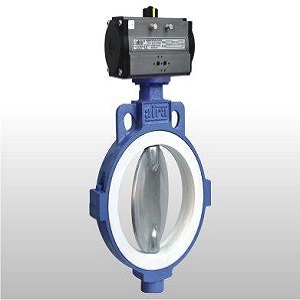Exploring the Different Types of Butterfly Valves and Their ApplicationsPosted by Aira Euro on September 27th, 2023  When it comes to controlling the flow of liquids or gases in various industries, one type of valve that often takes center stage is the butterfly valve. But what exactly are butterfly valves, and how do they work? In this article, we will dive deep into the world of butterfly valves, exploring the different types available and their wide-ranging applications. So, whether you're a curious individual or someone in search of practical knowledge, let's embark on this journey to unravel the fascinating world of butterfly valves. Introduction to Butterfly ValvesButterfly valves, despite their delicate-sounding name, are robust and versatile devices used for regulating the flow of fluids. They are widely employed in industries such as water treatment, chemical processing, HVAC, and even in our everyday lives, like in the plumbing systems of our homes. The Anatomy of a Butterfly ValveTo understand how a butterfly valve works, let's dissect its anatomy. A typical butterfly valve consists of a round disc or "butterfly" that pivots on a shaft. When the valve is open, this disc is parallel to the flow, allowing for unrestricted movement of the fluid. Conversely, when the valve is closed, the disc is perpendicular to the flow, blocking it entirely. Types of Butterfly ValvesButterfly valves come in various types, each with its own unique design and purpose. Here are some of the most common: Lug Style Butterfly ValveThe lug style butterfly valve is known for its ease of installation. It has threaded inserts (lugs) on its body, making it simple to attach between flanges in a pipeline. This design allows for easy maintenance without disturbing the entire system. Wafer Style Butterfly ValveWafer style butterfly valves are lightweight and cost-effective. They fit between two pipeline flanges without the need for additional bolts or nuts. These valves are excellent for applications where space is limited. Double Offset Butterfly ValveDouble offset butterfly valves are designed to handle high-pressure systems. They have two offsets: one in the shaft and another in the seat. This construction reduces wear and tear, making them durable for demanding environments. Triple Offset Butterfly ValveTriple offset butterfly valves are the heavy-duty champions of this category. With three offsets in the shaft, seat, and seal, they can withstand extreme temperatures and pressures. These valves are ideal for critical applications like those in the oil and gas industry. How Butterfly Valves WorkNow that we know about the different types of butterfly valves, let's delve into how they actually work. When you rotate the disc within the valve, it modulates the flow of fluid. This simple yet effective mechanism allows for precise control over the flow rate, making butterfly valves invaluable in various industries. Applications of Butterfly ValvesThe butterfly valve is used in a wide range of industries, including:
Advantages of Butterfly ValvesButterfly valves offer several advantages:
Disadvantages of Butterfly ValvesWhile butterfly valves have many merits, they also have some drawbacks:
Maintenance and Care of Butterfly ValvesProper maintenance is crucial to ensure the longevity and efficiency of butterfly valves. Regular inspections, lubrication, and cleaning are key. Specific maintenance instructions can be found in the manufacturer's guidelines. ConclusionIn conclusion, butterfly valves are essential components in various industries, providing precise control over fluid flow. They come in different types, each tailored to specific applications. While they offer advantages like quick operation and cost-efficiency, they may not be suitable for all scenarios. Proper maintenance is essential to keep these valves performing optimally. Like it? Share it!More by this author |


